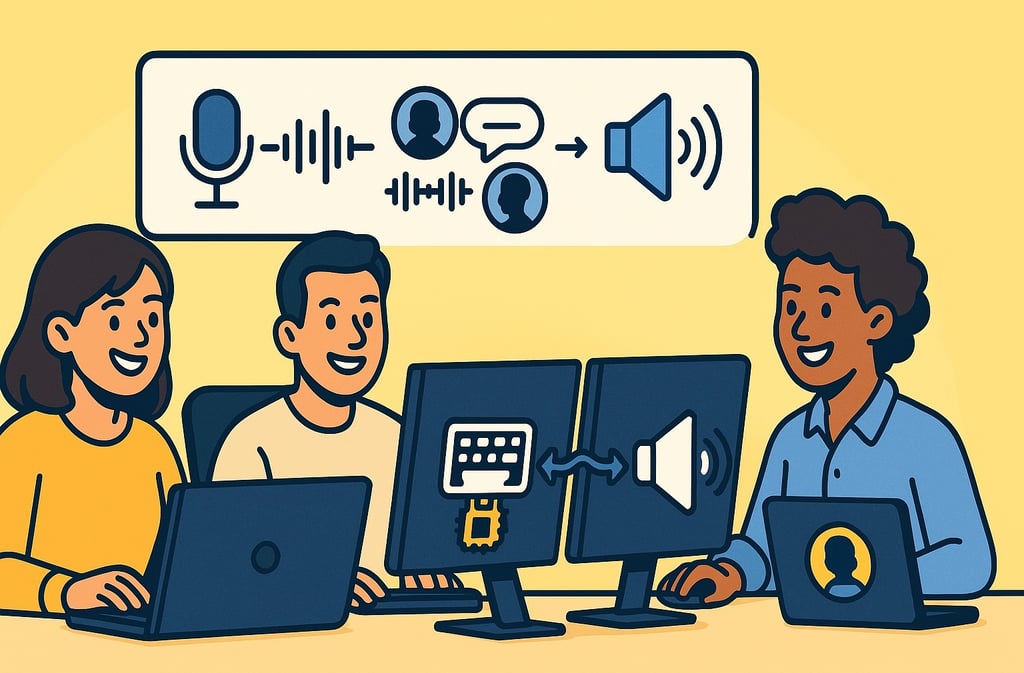AI Audio Models Transforming Human-Like Interactions
Explanation of AI audio models, covering speech-to-text, text-to-speech, and speech-to-speech types, their uses, advantages in nuance capture, and significance for human-like AI interactions and future advancements.
AIARTIFICIAL INTELLIGENCEAUTOMATIONTECHNOLOGY
Eric Sanders
10/27/20253 min read


The Future Sounds Like This: Unlocking the Power of AI Audio Models
There’s a quiet revolution happening right now in the way we interact with machines. It’s not flashy or overtly visible, but it’s reshaping communication in ways we barely notice — AI audio models. These technologies, from speech-to-text and text-to-speech to the more complex speech-to-speech systems, are not just tools; they’re foundational shifts toward more human-like interactions between people and machines.
I remember the early days of voice assistants and speech recognition software—clunky misinterpretations, robotic synthetic voices, and endless manual corrections. AI audio models today don’t just transcribe or generate speech; they grasp subtle nuances, accents, emotions, and context, making the experience richer and profoundly more natural. This is not merely a technical upgrade; it’s a paradigm change in human-computer interaction.
From Sounds to Meaning: Understanding AI Audio Models
AI audio models broadly fall into three categories, each with a unique role but overlapping in their goal to bridge human expression and digital processing:
- Speech-to-Text (STT): Converts spoken words into written text. This tech is behind everything from voice typing on smartphones to captioning videos and real-time transcription services.
- Text-to-Speech (TTS): Transforms written text back into audible speech. Modern TTS systems are evolving beyond monotonous robot voices to produce natural, expressive speech that can convey tone and emotion.
- Speech-to-Speech (S2S): A hybrid of the above, this innovative technology takes spoken language in one form and outputs it in another, potentially altering voice, language, or emotional inflection. It’s the closest we’ve come to truly lifelike and adaptive AI communication.
Each of these models is powered by deep learning techniques and massive datasets that enable machine learning systems to understand context, intonation, and cultural nuances—all essential to making audio interactions feel authentically human.
Going Beyond the Words
One of the most exciting advancements in AI audio models is their ability to “get” subtle aspects of human speech:
- Tone and emotion: Recognizing frustration, happiness, or sarcasm within speech enables AI to respond more appropriately.
- Accent and dialect sensitivity: Systems can adapt to or preserve regional speech traits, making communication inclusive and personal.
- Speaker identity: Voice cloning and recognition aren’t just science fiction—they’re increasingly feasible, allowing personalized experiences without sounding generic or synthetic.
A poignant takeaway here is how critical nuance is for meaningful dialogue. As one expert notes, "Capturing human nuance is the difference between a transaction and a relationship." This insight reminds us that AI audio models are not just about efficiency; they’re about empathetic connection.
How These Models are Changing Our Lives
The implications of AI audio models extend far beyond novelty. Their real-world applications span multiple industries and have the potential to democratize access, improve accessibility, and transform entertainment:
- Healthcare: Real-time transcription of doctor-patient conversations increases accuracy, reduces administrative burden, and allows clinicians to focus on care rather than note-taking.
- Customer Service: Virtual assistants and chatbots powered by these models provide 24/7 support that sounds human, improving customer experience by offering context-aware, emotionally intelligent responses.
- Accessibility: For people with disabilities, especially the hearing-impaired or those with speech difficulties, AI audio models open new communication channels that adapt to their needs.
- Media and Entertainment: AI can generate voiceovers in multiple languages or change vocal styles for audiobooks, gaming, and dubbing—cutting time and costs dramatically.
Practical Lessons for Adopting AI Audio Models
If there’s one thing to take away from the growing landscape of AI audio technology, it’s this: implementation matters just as much as innovation. Here are some key considerations when applying these models in real-world scenarios:
- Data Privacy: Voice data is deeply personal. Ensuring secure handling and transparency about usage is not negotiable.
- Customization vs. Standardization: Balance out-of-the-box usability with tailored models that reflect specific user needs or branding voice.
- Continuous Learning: AI audio models improve with ongoing training on diverse and up-to-date datasets to avoid bias and increase accuracy.
- User-Centric Design: Keep the human user at the center. AI’s success hinges not on perfect technology but how well it enhances human communication.
Towards a More Human Digital Dialogue
Reflecting on the journey of AI audio models brings a powerful lesson: technology’s ultimate purpose is not mere automation but amplification of human potential. These models help machines “listen” and “speak” in ways that honor the complexity of human interaction rather than flatten it into binary commands.
As we stand on the cusp of an AI-driven conversational world, one question lingers: how will we shape the voices of our future? How can we ensure they reflect empathy, authenticity, and inclusiveness rather than losing themselves in cold efficiency?
There is a profound opportunity here—not just to build smarter machines but to nurture richer, more meaningful exchanges across digital platforms. Those who engage with AI audio models today are crafting the auditory landscape of tomorrow.
So, when was the last time you truly listened to the voice of technology—and did it sound human?
Efficiency
Transform your workflows and reclaim your time.
Contact Us
Need A Custom Solutions? Lets connect!
info@thedigiadvantagepro.com
772-228-1085
© 2025. All rights reserved.
